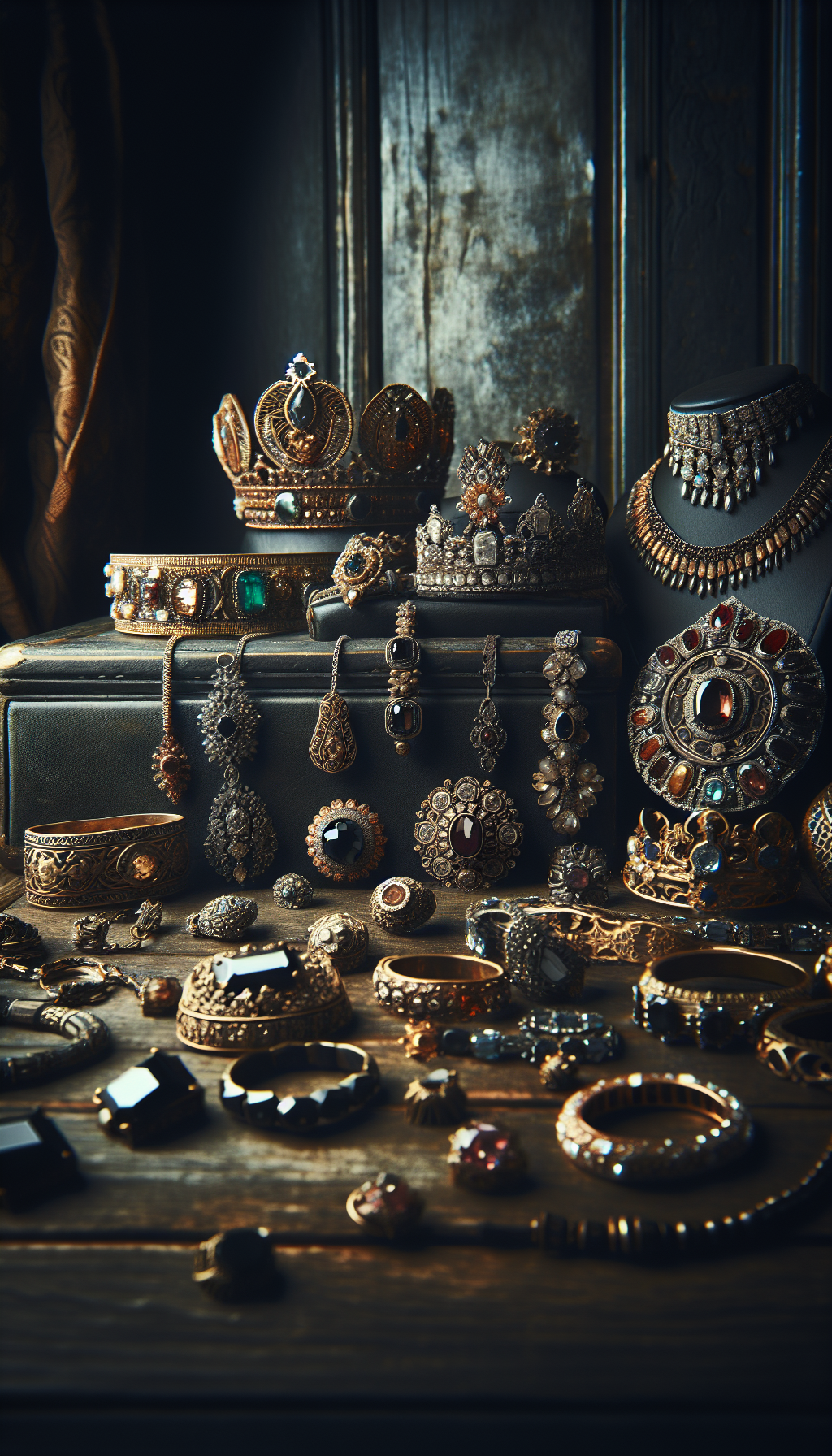Introduction to Antique Trunk Valuation
In this comprehensive guide, we’ll explore the various factors that influence the value of antique trunks, from identification tips to condition assessment, helping you determine whether your vintage storage chest might be worth significant money in today’s collector’s market.

Types of Antique Trunks and Their Value Ranges
Antique Trunk Types and Value Ranges
Current market values for different trunk styles in good condition
</tbody>
</table>
Flat Top Trunks
The most common antique trunk style, flat top trunks feature a rectangular design with a flat lid. These practical storage pieces were widely used throughout the 19th and early 20th centuries. While generally more affordable than other styles due to their ubiquity, exceptional examples with original hardware and unique features can command higher prices.
Dome Top/Camelback Trunks
Recognizable by their curved top design, dome top (or camelback) trunks offer more interior storage space than flat top varieties. The distinctive curved lid requires more skilled craftsmanship, making well-preserved examples more valuable to collectors. Those with original canvas or paper coverings intact are particularly desirable.
Steamer Trunks
Designed specifically for travel on steamships, these lower-profile trunks were made to fit under cabin bunks. Typically constructed in the late 19th to early 20th centuries, authentic steamer trunks with original leather straps, brass hardware, and interior compartments are highly sought after by collectors and decorators alike.

Luxury Brand Trunks
At the highest end of the value spectrum are trunks produced by prestigious luxury manufacturers. Antique Louis Vuitton trunks represent the pinnacle of trunk collecting, with rare examples selling for tens of thousands of dollars at auction. Other valuable makers include Goyard, Moynat, and Asprey, whose trunks combine exceptional craftsmanship with prestigious brand heritage.
Key Value Factors for Antique Trunks
Age and Historical Period
While all antique trunks have historical value, those from certain periods are more coveted by collectors:
- Pre-1850s trunks: Very rare and typically command premium prices if well-preserved
- Victorian Era (1850-1900): Popular among collectors for their ornate hardware and craftsmanship
- Early 20th Century (1900-1940): More common but still valuable, especially travel trunks from luxury makers
Determining the age of your trunk requires examining construction methods, hardware styles, and materials used. Hand-forged nails, dovetail joints, and certain types of wood can all indicate an earlier manufacturing date.
Manufacturer and Maker Marks
Trunks made by recognized manufacturers typically hold greater value than unmarked pieces. Look for maker’s marks, labels, or stamps inside the trunk or on hardware components. Some notable trunk makers include:
- Louis Vuitton
- Goyard
- Moynat
- Crouch & Fitzgerald
- Hartmann
- Innovation Trunk Company
- Mendel & Company
- Oshkosh Trunk Company

Condition Assessment
Condition is perhaps the single most important factor in determining an antique trunk’s value. Here’s what collectors and appraisers look for:
Antique Trunk Condition Factors
Elements that affect valuation based on condition
- Original hardware (hinges, locks, handles) intact and functioning
- Interior compartments, trays, and dividers present and undamaged
- Original canvas, leather, or paper covering in good condition
- Minimal wood damage, with no significant cracks or warping
- Working lock mechanism with original key
- Original finish or patina rather than modern paint or refinishing
- Free from excessive moisture damage, mold, or musty odors
- Lid that opens and closes properly with stable hinges
Rarity and Unique Features
Certain characteristics can make an antique trunk especially valuable due to their rarity:
- Unusual size (either very large or miniature examples)
- Rare wood types or materials
- Complex interior configurations with numerous compartments
- Specialized purpose trunks (jewelry, hat, or shoe trunks)
- Documented provenance or connection to historical figures
- Unique decorative elements or hand-painted designs
Historical Timeline of Trunk Development
Evolution of Antique Trunks
- 1600-1700s
Early Wooden Travel Chests
Simple wooden boxes with flat tops, often reinforced with iron bands. These primitive trunks were primarily functional rather than decorative. - Early 1800s
Hide-Covered Trunks
Trunks covered with animal hide (often deer or horse) became popular, featuring rounded tops to repel water. Hardware became more sophisticated with corner protectors. - Mid-1800s
Canvas and Paper-Covered Trunks
As manufacturing methods improved, trunks were often covered with canvas or decorative paper. Embossed tin became popular for covering and decorative elements. - 1870-1900
Golden Age of Trunk Making
The height of trunk craftsmanship coincided with the expansion of rail travel. Saratoga trunks, steamer trunks, and dresser trunks emerged with specialized compartments. - 1900-1920s
Luxury Brand Dominance
High-end makers like Louis Vuitton, Goyard, and others created status symbol trunks for wealthy travelers. Specialized wardrobe trunks featured hanging compartments. - 1930-1940s
Decline of Trunk Production
As suitcases became more practical for modern travel, trunk production declined. Many companies shifted to smaller luggage or went out of business.
How to Identify Valuable Antique Trunks

Examining Construction and Materials
Start by assessing how your trunk was made:
Wood type: Oak, pine, and cedar were commonly used. Rarer woods like mahogany or walnut may indicate a higher-end piece.
Joinery methods: Hand-cut dovetail joints suggest earlier craftsmanship, while machine-cut joints indicate later manufacturing.
Nail types: Square or rectangular nail heads typically indicate pre-1890 construction, while round wire nails suggest later production.
Bottom construction: Look at the bottom slats—earlier trunks often had wooden slats running front-to-back, while later ones ran side-to-side.
Analyzing Hardware and Metalwork
Hardware offers important clues about a trunk’s age, quality, and potential value:
Lock plates: Ornate brass or iron lock plates with intricate designs typically indicate higher quality.
Hinges: Examine whether they’re hand-forged (earlier) or machine-made (later).
Corner protectors: Quality and design of corner pieces can help identify manufacturing period and maker.
Handles: Original cast handles versus replacements; drop handles versus fixed styles.
Searching for Maker’s Marks
Look carefully for any manufacturer identification:
Paper labels: Often found inside the lid or on interior compartments, though many have been lost to time.
Embossed marks: Some manufacturers stamped their names into metal hardware or leather straps.
Paint stencils: Sometimes visible on the trunk exterior or interior.
Distinctive hardware patterns: Certain designs were unique to specific manufacturers.
Valuation Methods for Antique Trunks
Comparable Market Analysis
One of the most reliable methods for valuing antique trunks is researching recent sales of similar pieces:
Auction results: Check major auction houses like Christie’s, Sotheby’s, and specialized antique auctions for comparable trunk sales.
Online marketplaces: Platforms like eBay, 1stDibs, and Etsy can provide current asking prices, though be aware that these may be higher than actual selling prices.
Antique dealers: Visit physical antique shops or contact online specialists who deal specifically in antique trunks.
Recent Auction Results for Antique Trunks
Notable sales from major auction houses and online platforms
| Category | Price | Notes |
|---|---|---|
| Flat Top Trunk | $100-$300 | Most common type, wooden construction with flat lid |
| Dome Top/Camelback Trunk | $200-$500 | Rounded top design, often with decorative paper or canvas covering |
| Steamer Trunk | $300-$700 | Low-profile design meant to fit under steamer ship berths |
| Saratoga Trunk | $500-$1,500 | High-end dome design with decorative elements and fine hardware |
| Jenny Lind Trunk | $400-$900 | Characterized by slat construction and distinctive hardware |
| Luxury Brand Trunk (Louis Vuitton, Goyard) | $3,000-$20,000+ | Premium designer trunks with authenticated provenance |
</tbody>
</table>
Professional Appraisal
For high-value or rare trunks, professional appraisal is recommended:
Antique furniture specialists: Seek appraisers with specific experience in antique trunks and travel items.
Auction house specialists: Major auction houses offer appraisal services, though often for a fee.
Certified appraisers: Look for professionals certified by organizations like the International Society of Appraisers or the American Society of Appraisers.
Online Valuation Tools and Communities
Several online resources can help with initial valuation:
Appraisal forums: Websites where experts and collectors can view photos of your trunk and provide approximate values.
Social media groups: Specialized antique trunk collector groups on Facebook and other platforms.
Virtual appraisal services: Online consultations with antique experts for preliminary assessments.
Restoration and Preservation: Impact on Value

When Restoration Enhances Value
Certain types of restoration work can improve a trunk’s value:
Hardware cleaning and maintenance: Gentle cleaning of original brass or iron hardware.
Structural repairs: Fixing broken hinges or strengthening weak joints using period-appropriate methods.
Canvas or leather repair: Professional restoration of covering materials using historical techniques.
Interior cleaning and preservation: Careful cleaning of original fabric linings or paper elements.
When Restoration Diminishes Value
Beware of these restoration approaches that typically decrease value:
Removing original finishes: Stripping original patina destroys historical integrity.
Replacing original hardware: Substituting reproduction hardware for damaged original pieces.
Modern refinishing: Using contemporary paints or finishes that weren’t available when the trunk was made.
Over-restoration: Making an antique look “new” rather than preserving its authentic aged appearance.
Preservation Best Practices
For maintaining your antique trunk’s value:
Antique Trunk Preservation Tips
Follow these guidelines to maintain your trunk's condition and value
- Store in climate-controlled environment with stable humidity
- Clean with appropriate methods for specific materials (wood, metal, leather)
- Avoid direct sunlight to prevent fading of coverings
- Use archival materials for storing any documents inside the trunk
- Apply appropriate leather conditioners to prevent cracking
- Consult specialists before attempting any significant repairs
Where to Buy and Sell Antique Trunks
Best Places to Purchase Antique Trunks
For collectors seeking quality antique trunks:
Specialized antique dealers: Shops focusing on antique furniture often have curated selections of quality trunks.
Antique shows and fairs: Events like the Brimfield Antique Show offer opportunities to examine pieces in person.
Online marketplaces: Platforms like 1stDibs, Ruby Lane, and Chairish cater to serious antique collectors.
Auction houses: Both traditional auction houses and online auctions like LiveAuctioneers offer authenticated pieces.
Estate sales: Can yield unexpected finds, often at more reasonable prices than retail settings.
Selling Your Antique Trunk
When ready to sell, consider these options:
Consignment with specialized dealers: They have the expertise to market your piece to the right collectors.
Auction houses: For rare or valuable trunks, specialized antique auctions can attract serious buyers.
Direct-to-consumer platforms: eBay, Etsy, and Facebook Marketplace allow you to reach buyers directly.
Antique trunk restorers: Some restoration specialists also buy trunks for their inventory.

Collecting and Investing in Antique Trunks
Current Market Trends
The antique trunk market has seen several notable trends in recent years:
Rising premium for luxury brands: Trunks from prestigious makers like Louis Vuitton continue to appreciate significantly.
Increased interest in industrial designs: Early 20th-century steamer trunks with metal components are gaining popularity.
Decorative appeal driving purchases: Many buyers are acquiring trunks as statement furniture pieces rather than purely as collectibles.
Provenance premium: Trunks with documented history or connection to notable figures command significantly higher prices.
Investment Strategy Tips
For those collecting with investment potential in mind:
Focus on condition: Pieces in excellent original condition will always command premiums.
Research maker history: Understanding a manufacturer’s production periods and methods helps identify undervalued pieces.
Consider rarity factors: Unusual sizes, special-purpose designs, or limited production runs typically appreciate faster.
Document authenticity: Maintain any original receipts, authentication papers, or provenance documentation.
Insure valuable pieces: For high-value trunks, specialized collectibles insurance is essential.
Common Questions About Antique Trunk Values
Antique Trunk Valuation FAQs
How do I know if my old trunk is valuable?
To determine if your old trunk is valuable, examine these key factors:
- Check for maker’s marks or labels (especially from prestigious manufacturers like Louis Vuitton, Goyard, or Hartmann)
- Assess the overall condition—original hardware, intact interior components, and minimal damage significantly increase value
- Identify the style and age—rare designs and pre-1900 trunks typically command higher prices
- Look for unusual features like complex interior compartments or rare materials
- Research similar trunks that have recently sold at auction or through reputable dealers
Remember that even common trunks in good condition can be worth $100-300, while exceptional examples from luxury makers can fetch thousands.
How can I tell the age of my antique trunk?
Determining the age of an antique trunk involves examining several identifying characteristics:
- Construction techniques: Hand-cut dovetail joints and square nails indicate pre-1890 manufacturing
- Hardware styles: Machine-stamped hardware suggests post-1870s, while hand-forged pieces indicate earlier periods
- Materials used: Canvas coverings became common after the 1870s, while earlier trunks often used leather or hide
- Design elements: Flat tops were common in early trunks, with dome tops gaining popularity in the mid-1800s
- Interior features: The style of interior compartments, paper linings, and tray configurations evolved over time
For a more precise age determination, consult reference books with dating timelines or seek an expert’s opinion using clear photographs of construction details.
What's the difference between a steamer trunk and other antique trunk types?
Steamer trunks are distinguished from other antique trunk types by several key characteristics:
- Lower profile design: Typically only 12-14 inches tall, designed specifically to fit under berths on steamships
- Flat tops: Unlike dome-top trunks, steamer trunks feature flat lids for stacking
- Travel-focused features: Often include heavy-duty straps, reinforced corners, and sturdy handles
- Time period: Most commonly manufactured between 1880-1920, coinciding with the golden age of ocean liner travel
- Interior organization: Generally simpler interiors than dresser trunks, often with just one or two trays
By comparison, other trunk types include taller wardrobe trunks (with hanging compartments), ornate Saratoga trunks (with dome tops), and simple flat-top storage chests. Steamer trunks typically range in value from $300-700, though luxury maker examples can sell for much more.
Are old steamer trunks worth anything?
Yes, old steamer trunks definitely have value in today’s market. Their worth varies widely based on several factors:
- Typical value range: Most standard steamer trunks from the late 19th to early 20th century sell for $300-700 in good condition
- Premium brands: Steamer trunks from luxury makers like Louis Vuitton or Goyard can fetch $3,000-20,000+ depending on condition and rarity
- Condition factors: Original hardware, functional locks, intact interior components, and minimal damage significantly increase value
- Market demand: Steamer trunks are particularly popular as decorative furniture pieces, making them more valuable than some other trunk styles
- Historical significance: Trunks with provenance connecting them to famous ships (like the Titanic era) or notable owners can command premium prices
Even in fair condition, most steamer trunks retain value due to their appeal as both functional storage and conversation pieces with historical character.
Should I restore my antique trunk or leave it as is?
The decision to restore an antique trunk should be carefully considered, as it can either enhance or diminish value:
When to restore:
- If the trunk has structural damage that threatens its stability
- If hardware is missing essential functional elements
- If the trunk will be used for display or light functional purposes
- If the restoration work will be done by a professional using period-appropriate methods
When to leave as is:
- If the trunk has a desirable patina or aged appearance
- If it’s a rare or museum-quality piece
- If original components are present but worn
- If you’re uncertain about proper restoration techniques
Remember that improper restoration often reduces value more than moderate wear. For valuable trunks (over $500), consult with an antique furniture specialist before proceeding with any significant repairs or refinishing.
What are vintage trunks made of?
Antique trunks incorporate a variety of materials, with construction elements varying by era and style:
- Wood: The primary structural material, commonly pine for framework, though oak, cedar, and occasionally mahogany were also used
- Covering materials:
- Early trunks (pre-1850s): Leather or rawhide
- Mid-19th century: Canvas treated with paint or waterproofing
- Victorian era: Embossed tin, decorative papers, or patterned canvas
- Luxury trunks: Specialized materials like Louis Vuitton’s treated canvas with monogram patterns
- Metal elements: Iron or brass for hardware, with steel becoming more common in later examples
- Interior materials: Paper linings, fabric (often linen or cotton), wood for compartment dividers, and sometimes wallpaper
- Protective coatings: Varnish, shellac, oil finishes, or paint depending on the era and intended use
The quality and condition of these materials significantly impact a trunk’s value, with original components in good condition being highly desirable to collectors.
External Resources for Antique Trunk Research
Helpful Antique Trunk Resources
Brettuns Village Trunk Shop
Comprehensive source for antique trunk identification, restoration supplies, and a marketplace for authentic vintage pieces with detailed descriptions.
How to Value Antique Trunks: Easy Identification Guide
Step-by-step guide to determining trunk value with visual examples of different trunk styles and detailed pricing information.
1stDibs Antique Steamer Trunk Collection
Curated marketplace featuring high-end antique trunks with verified authenticity and detailed provenance information from reputable dealers.
Stevens Antique Trunks
Specialist dealer offering refurbished antique trunks with detailed information about restoration processes and trunk history.
Antique Trunks Identification & Value Guide
Comprehensive guide covering the history, identification features, and current market values for various antique trunk styles.
Conclusion: Making the Most of Your Antique Trunk
The value of an antique trunk depends on numerous factors: its age, maker, condition, rarity, and historical significance all play important roles. While luxury brand trunks from makers like Louis Vuitton can command astronomical prices, even more common examples have found renewed appreciation in today’s market as both collectibles and functional decor items.
If you own an antique trunk, take time to research its origins and consider consulting a professional appraiser if you believe it may be particularly valuable. Proper preservation will maintain both its historical integrity and its value for future generations. Whether displayed as a coffee table, used as storage, or kept as an investment, these versatile pieces continue to captivate with their combination of practical design and historical significance.
Remember that beyond monetary value, antique trunks offer something increasingly rare in our modern world—a tangible connection to craftsmanship traditions that span centuries and the stories of those who relied on these sturdy companions during their journeys across oceans and continents.
Get a Professional Appraisal
Unsure about your item’s value? Our certified experts provide fast, written appraisals you can trust.
- Expert report with photos and comps
- Fast turnaround
- Fixed, upfront pricing
No obligation. Secure upload.
| Category | Price | Notes |
|---|---|---|
| Louis Vuitton Steamer Trunk, c.1920 | $12,500 | Christie's, March 2023 |
| Saratoga Dome Top Trunk, c.1880 | $1,800 | Heritage Auctions, January 2023 |
| Crouch & Fitzgerald Steamer, c.1910 | $650 | eBay, May 2023 |
| Victorian Flat Top with Original Tray, c.1870 | $425 | 1stDibs, April 2023 |
| Goyard Wardrobe Trunk, Early 20th Century | $7,800 | Sotheby's, February 2023 |




